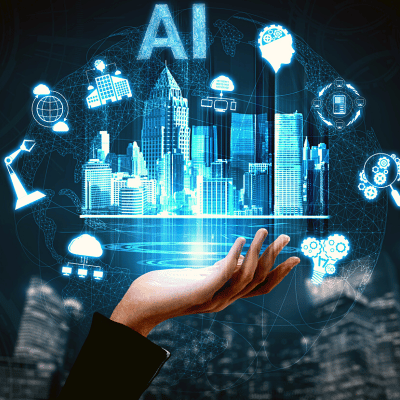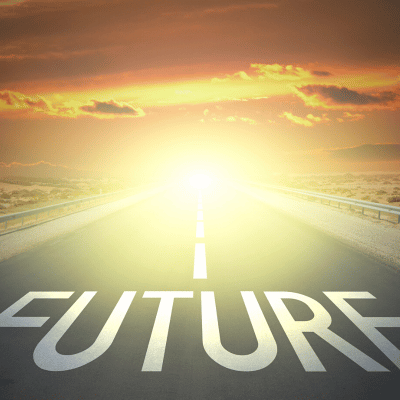Picture a world where signs adapt to your needs in real-time, offering useful information and guiding you with ease. Welcome to the future of sign making, where artificial intelligence (AI) and machine learning are changing the industry. They boost creativity, enhance efficiency, and revolutionize how we interact with signage.
In this blog post, we’ll uncover the exciting link between AI and the sign industry. We will discuss how this advanced technology is reshaping our world. From AI-powered design and smooth production to predictive maintenance and eco-friendly signs, we’ll explore the many benefits and uses of this innovation. Join us on this journey as we reveal the future of sign making, one smart sign at a time.
The Intersection of AI and Sign Making: A Perfect Match for Innovation
Smart technology is transforming industries, and sign making is no exception. AI-powered smart signs are a prime example of how innovation drives new possibilities in the sign industry.
By blending traditional techniques with AI and machine learning, smart signs achieve an attractive, functional, interactive, and adaptive signage experience. These signs cater to users’ changing needs and adapt to various environments.
Furthermore, AI in smart signs enables businesses to create personalized experiences for customers. For instance, retailers can use smart signs to display tailored promotions based on customer preferences or real-time data, such as inventory levels and traffic patterns. In public spaces, smart signs adapt to provide vital information or guidance depending on events, weather, or time of day.
In summary, smart signs are reshaping how we interact with signage. By utilizing AI, the sign industry is unlocking new potential in creativity, efficiency, and effectiveness, making the future of signage brighter and more exciting than ever.
AI-Driven Design: Unleashing New Levels of Creativity in Signage
 As technology continues to evolve, the sign industry is reaping the benefits of incorporating AI into the design process. AI-driven design is pushing the boundaries of creativity in signage, leading to more engaging, eye-catching, and effective visual communication.
As technology continues to evolve, the sign industry is reaping the benefits of incorporating AI into the design process. AI-driven design is pushing the boundaries of creativity in signage, leading to more engaging, eye-catching, and effective visual communication.
One of the key advantages of using AI in the design process is its ability to analyze vast amounts of data quickly. By examining patterns and trends in customer preferences, AI can suggest design elements that resonate with the target audience. This data-driven approach to design ensures that custom signs are not only visually appealing but also highly relevant and impactful.
Another benefit of AI-driven design is the ability to generate numerous design variations in a short period. Designers can leverage AI algorithms to explore multiple creative options, enabling them to fine-tune their designs based on feedback and make data-informed decisions. This process saves time and resources while ensuring the best possible outcome.
Additionally, AI can assist in the creation of dynamic, responsive signage that adapts to its surroundings. For example, AI-powered smart signs can adjust their content based on factors such as time of day, weather conditions, or customer demographics, providing a more personalized and engaging experience for users.
The integration of AI into the design process is unlocking new levels of creativity in the sign industry. By embracing AI-driven design, businesses can create more effective and engaging signage that stands out in today’s competitive landscape.
Streamlining Production: How AI and Automation are Reducing Costs and Increasing Efficiency
The sign industry has long sought ways to optimize production, minimize costs, and improve efficiency. AI and automation have emerged as game-changers, streamlining the entire production process and paving the way for more efficient and cost-effective sign manufacturing.
One significant advantage of AI in production is its ability to predict and optimize material usage. By analyzing patterns and historical data, AI can recommend the most efficient use of materials, minimizing waste and reducing overall costs. This not only helps businesses save money but also promotes sustainable and eco-friendly practices.
Additionally, AI-powered automation enables a faster and more precise production process. Machines can be programmed to execute complex tasks with incredible accuracy, ensuring high-quality signage that meets exact specifications. This level of precision reduces errors and the need for manual intervention, resulting in faster production times and improved efficiency.
Moreover, AI can help monitor equipment performance and predict maintenance needs. This proactive approach to maintenance ensures that machines are always in optimal working condition, minimizing downtime and maximizing productivity. As a result, businesses can better plan their production schedules and avoid unexpected delays or disruptions.
The adoption of AI and automation in the sign industry has led to significant improvements in production efficiency and cost reduction. By streamlining the production process and leveraging the power of AI, businesses can now create high-quality signage while keeping costs under control and staying competitive in the market.
Predictive Maintenance: Ensuring Sign Longevity with AI-Powered Monitoring
The longevity and performance of signs are crucial factors for businesses investing in signage solutions. With the integration of AI-powered monitoring, predictive maintenance has become a reality, allowing for timely interventions and increasing the lifespan of signs.
Real-time Monitoring and Data Analysis
AI-powered monitoring systems gather real-time data on various aspects of sign performance, such as energy consumption, illumination levels, and structural integrity. By analyzing this data, AI can identify patterns and potential issues, allowing businesses to address them proactively before they escalate into more significant problems. This continuous monitoring and analysis ensure that signs remain in optimal condition, providing consistent performance and reducing the likelihood of unexpected failures.
Timely Interventions and Reduced Downtime
Predictive maintenance powered by AI enables businesses to schedule maintenance tasks based on data-driven insights. This proactive approach helps avoid the pitfalls of reactive maintenance, such as increased downtime, higher repair costs, and potential damage to the sign’s brand image. By anticipating and addressing issues early, businesses can minimize disruptions, extend the lifespan of their signs, and ultimately, maximize their return on investment.
AI-powered predictive maintenance is a game-changer for the sign industry, ensuring sign longevity and improved performance. By embracing real-time monitoring, data analysis, and timely interventions, businesses can reap the benefits of efficient maintenance practices and maintain a competitive edge in the market.
Personalized Signage: Leveraging AI to Create Tailored Solutions for Every Business
In today’s competitive landscape, standing out and connecting with the audience is vital. Personalized signage, powered by AI, offers a way to create tailored, engaging experiences. Here are five ways AI enables personalized signage solutions for all businesses:
- Targeted Messaging: AI analyzes customer demographics and preferences to create targeted messages. This data-driven approach helps businesses communicate their unique value and connect with customers.
- Dynamic Content: AI-powered smart signs adapt their content based on factors like time of day, weather, or customer traffic. This dynamic content keeps the signage relevant and engaging.
Location-based Customization and Interactive Signage
- Location-based Customization: AI helps optimize sign placement and design based on factors like local culture or customer preferences. This customization helps create signage that integrates seamlessly into the surroundings.
- Interactive Signage: AI enables interactive signage solutions, such as touchscreens or voice-activated interfaces. This interactivity fosters deeper connections with customers and helps businesses stand out.
Continuous Improvement Through Analytics
- Continuous Improvement: AI-driven analytics measure the performance and impact of signage, providing insights for improvement. Businesses can use this data to refine their strategy, ensuring they stay ahead and deliver the best experience.
AI is revolutionizing signage by enabling personalized, engaging, and data-driven solutions. By embracing AI-powered personalization, businesses can create experiences that resonate with their audience and drive success.
Dynamic Content: How AI is Enabling Real-Time Signage Updates for Enhanced Engagement
 In a rapidly changing world, businesses need to keep up with the fast-paced nature of information sharing and customer demands. AI-powered dynamic content is transforming the sign industry, allowing for real-time signage updates that capture attention and enhance user engagement.
In a rapidly changing world, businesses need to keep up with the fast-paced nature of information sharing and customer demands. AI-powered dynamic content is transforming the sign industry, allowing for real-time signage updates that capture attention and enhance user engagement.
One of the primary benefits of AI-driven dynamic content is its ability to analyze and process large amounts of data in real time. This allows signs to adapt their content based on various factors, such as time of day, customer traffic, or even social media trends. By presenting up-to-date and relevant information, businesses can effectively engage their audience and encourage interaction.
Moreover, AI-powered dynamic content is particularly valuable for businesses that need to respond quickly to changes in their environment. For instance, retailers can use AI to update their signs with real-time promotions or inventory levels, ensuring that customers always have access to the latest deals and product information. Similarly, restaurants can display menu changes or daily specials, keeping their patrons informed and satisfied.
Dynamic content is also a powerful tool for enhancing user experiences in public spaces. AI can help tailor content based on factors such as local events, weather conditions, or even emergency situations. By providing timely and relevant information, dynamic signs can improve user experiences and foster a sense of connection with the community.
AI is enabling real-time signage updates, leading to enhanced engagement and more effective visual communication. By incorporating AI-driven dynamic content, businesses can create interactive and adaptable signs that meet the ever-changing needs of their customers and the environment they operate in.
The Future of Wayfinding: AI-Enhanced Navigation Systems for Smarter Signage
The wayfinding landscape is evolving rapidly as technological advancements are incorporated into traditional signage solutions. AI-enhanced navigation systems are at the forefront of this transformation, paving the way for smarter, more efficient, and user-friendly signage experiences.
One of the most notable impacts of AI on wayfinding is the ability to personalize navigation based on individual user preferences and needs. By analyzing user behavior and historical data, AI can generate custom navigation routes that cater to specific preferences, such as accessibility requirements, preferred walking pace, or even points of interest.
Another significant development in AI-enhanced wayfinding is the integration of real-time data into navigation systems. AI can process information on traffic, weather, and events, providing users with up-to-date and contextually relevant directions. This not only improves the overall navigation experience but also ensures users reach their destination in the most efficient manner possible.
Furthermore, AI-powered wayfinding solutions can be seamlessly integrated with other smart technologies, such as smartphones or wearable devices. This integration enables users to access real-time updates and personalized navigation directly from their devices, making the wayfinding experience even more convenient and accessible.
AI-enhanced wayfinding also holds great potential for improving public safety. By utilizing AI to monitor and analyze crowd behavior, navigation systems can identify potential hazards or areas of congestion and proactively redirect users to safer, less crowded routes.
AI-enhanced navigation systems are revolutionizing the future of wayfinding, offering smarter, more efficient, and personalized signage solutions. By embracing the potential of AI in wayfinding, businesses and public spaces can create more user-friendly and effective navigation experiences, catering to the needs of an increasingly connected and tech-savvy population.
Eco-Friendly Signage: Harnessing AI to Improve Material and Energy Efficiency
As environmental awareness grows and businesses strive to reduce their ecological footprint, the sign industry is adopting innovative solutions to address sustainability concerns. Harnessing the power of AI is a key component in creating eco-friendly signage that not only improves material and energy efficiency but also aligns with modern environmental values.
Material Efficiency
One of the primary ways AI contributes to eco-friendly signage is by optimizing material usage. AI can analyze historical data and identify patterns, enabling it to recommend the most efficient use of materials for sign production. This minimizes waste, reduces overall costs, and promotes sustainable practices that benefit both businesses and the environment.
Furthermore, AI can help businesses make informed decisions when selecting eco-friendly materials for their signs. By analyzing data on the environmental impact of various materials, AI can suggest the most sustainable choices that align with a business’s green objectives.
Energy Efficiency
AI-driven energy management systems are also playing a crucial role in enhancing energy efficiency for illuminated signage. These systems monitor and control energy consumption, adjusting brightness levels based on factors such as ambient light, time of day, or occupancy levels. This intelligent approach to energy management significantly reduces energy usage and associated emissions, making signage more environmentally friendly.
Moreover, AI can optimize the design and placement of signs to maximize their visibility and effectiveness, while minimizing energy consumption. For example, AI can determine the best locations and angles for signage to ensure optimal visibility with minimal lighting.
AI is playing a pivotal role in promoting eco-friendly signage by improving material and energy efficiency. By harnessing the power of AI, businesses can create visually appealing signs that not only reduce their environmental impact but also contribute to a greener, more sustainable future.
Data-Driven Insights: How AI is Informing Sign Placement and Impact Analysis
In today’s data-driven world, AI insights are transforming industries, including the sign industry. By using AI, businesses can make smarter decisions on sign placement and analyze their signage impact. This ensures they maximize investment and effectively engage their target audience.
Sign Placement Optimization
AI processes large amounts of data, like geographical, demographic, and traffic information, to determine optimal sign placement. By analyzing this data, AI identifies patterns and trends, recommending locations with the best visibility and audience reach. This data-driven approach helps businesses make strategic decisions, increasing impact while reducing costs.
Additionally, AI assists businesses in optimizing sign design and layout to enhance effectiveness. By evaluating factors like size, color, and typography, AI suggests design improvements that boost visibility and engagement, leading to better results.
Impact Analysis
AI-powered analytics measure sign performance, offering valuable insights into signage effectiveness. These analytics track metrics such as foot traffic, dwell time, or conversion rates to evaluate a sign’s success and inform future decisions.
Understanding their signs’ impact, businesses can identify improvement areas, refine their signage strategy, and make data-driven decisions that enhance overall performance. Continuous impact analysis also enables businesses to stay ahead of trends and adapt their signage solutions to changing consumer preferences and market conditions.
AI plays a vital role in informing sign placement and impact analysis. By embracing AI-driven insights, businesses can optimize their signage solutions, engage their target audience more effectively, and achieve better results in the market.
Preparing for the Future: The Essential Role of AI in the Sign Industry’s Workforce Development
 As technology evolves rapidly, the sign industry faces new challenges and opportunities. AI has become an essential tool in shaping the industry’s future, and integrating it into workforce development is crucial for businesses to stay competitive and adapt to emerging trends.
As technology evolves rapidly, the sign industry faces new challenges and opportunities. AI has become an essential tool in shaping the industry’s future, and integrating it into workforce development is crucial for businesses to stay competitive and adapt to emerging trends.
Upskilling the Workforce
To harness AI’s potential, investing in upskilling the workforce is vital. Employees need skills to work effectively with AI-driven tools and technologies, such as data analysis and machine learning. By equipping employees with these skills, businesses can ensure they are prepared to navigate the changing landscape.
Fostering Human-AI Collaboration
Another critical aspect is fostering a collaborative environment between humans and AI. Employees must learn to leverage AI’s capabilities to enhance their work, while AI should support human creativity and decision-making. This symbiotic relationship can lead to efficient processes, improved designs, and innovative solutions.
Adapting to New Roles
AI integration in the sign industry will lead to new roles and transforming existing ones. Employees must adapt by acquiring new skills and embracing new responsibilities. Businesses can support this transition by providing resources, training, and opportunities for growth, ensuring workforce agility and adaptability.
Attracting Top Talent
As AI becomes integral to the sign industry, attracting top talent with expertise in AI and related fields is crucial. Companies must develop strategies to attract and retain skilled professionals who can contribute to industry growth and innovation.
Integrating AI into the sign industry’s workforce development is essential for businesses to stay competitive and adapt to emerging trends. By upskilling the workforce, fostering human-AI collaboration, adapting to new roles, and attracting top talent, businesses can ensure they are well-prepared for the future and can leverage AI’s full potential to drive the industry forward.
Conclusion
The sign industry is undergoing a significant transformation as AI and machine learning technologies continue to advance. As we have explored in this blog post, AI is enhancing creativity and efficiency in various aspects of the industry, from smart signs to eco-friendly solutions, real-time updates, and data-driven insights. Furthermore, AI plays an indispensable role in workforce development, preparing the industry for a dynamic and innovative future.
To stay competitive and capitalize on the benefits AI offers, businesses in the sign industry must be proactive in adopting these technologies and investing in the development of their workforce. By upskilling employees, fostering human-AI collaboration, adapting to new roles, and attracting top talent, businesses can ensure they remain at the forefront of industry innovation and growth.
Embracing AI in the sign industry not only enables businesses to deliver more effective and engaging signage solutions but also contributes to a more sustainable, data-driven, and customer-centric future. The possibilities are endless, and the sign industry is poised for a brighter, smarter future powered by AI.


